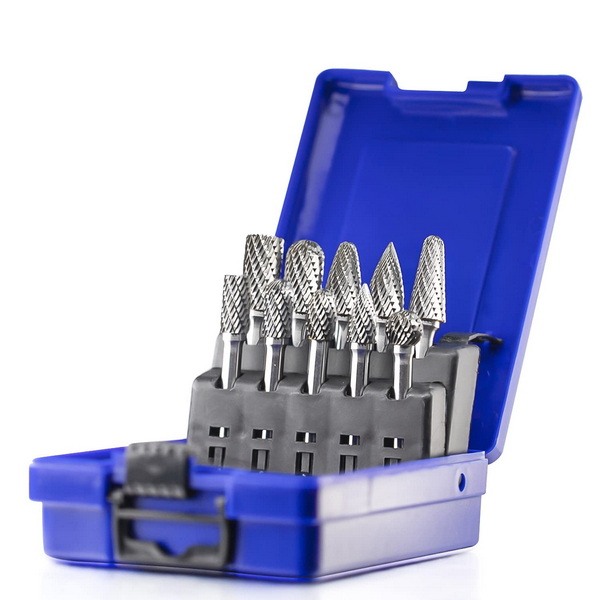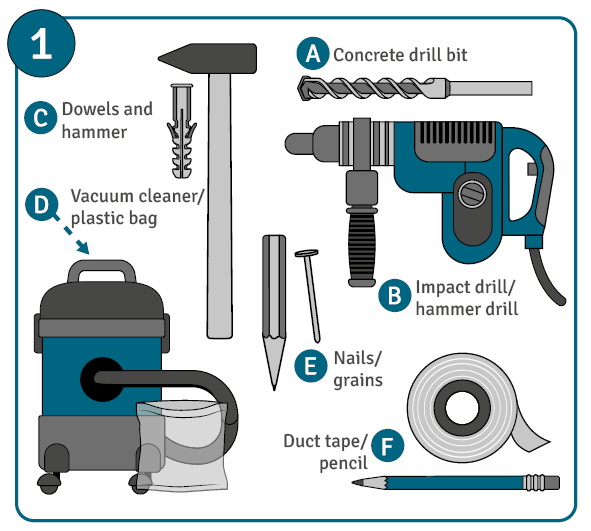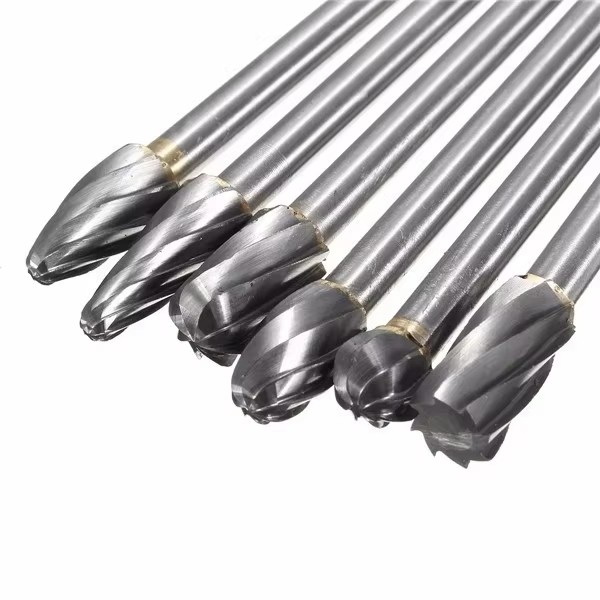Content Menu
● Introduction to Tungsten Carbide and Titanium
>> Tungsten Carbide
>> Titanium
● Comparison of Strength
>> Hardness and Scratch Resistance
>> Tensile Strength
>> Impact Resistance
>> Density and Weight
● Applications and Uses
>> Tungsten Carbide Applications
>> Titanium Applications
● Environmental Impact and Cost
>> Environmental Impact
>> Cost
● Manufacturing Processes
>> Tungsten Carbide Production
>> Titanium Production
● Future Developments
>> Advancements in Tungsten Carbide
>> Advancements in Titanium
● Conclusion
● Frequently Asked Questions
>> 1. What is the primary difference in hardness between tungsten carbide and titanium?
>> 2. Which material is more resistant to corrosion?
>> 3. What are the typical applications of tungsten carbide?
>> 4. Why is titanium preferred in aerospace?
>> 5. Is tungsten carbide hypoallergenic?
● Citations:
When comparing the strength of tungsten carbide and titanium, it's essential to consider various properties such as hardness, tensile strength, impact resistance, and density. Both materials are widely used in different industries due to their unique characteristics. In this article, we will delve into the details of each material, exploring their applications, advantages, and disadvantages.

Introduction to Tungsten Carbide and Titanium
Tungsten Carbide
Tungsten carbide is a compound made from tungsten and carbon, known for its extreme hardness and durability. It ranks between 8.5 to 9 on the Mohs hardness scale, making it one of the hardest substances available, second only to diamond. This hardness translates into excellent scratch resistance, which is why tungsten carbide is often used in cutting tools, mining equipment, and heavy-duty industrial machinery.
Tungsten Carbide Properties:
- Hardness: 8.5-9 on the Mohs scale
- Density: 15.6-15.8 g/cm³
- Melting Point: 2,870°C
- Applications: Cutting tools, mining, aerospace
Titanium
Titanium, on the other hand, is a metal known for its high strength-to-weight ratio and excellent corrosion resistance. It scores about 6 on the Mohs hardness scale, which is significantly lower than tungsten carbide but still higher than most precious metals. Titanium is widely used in aerospace, medical implants, and marine environments due to its lightweight and durable nature.
Titanium Properties:
- Hardness: 6 on the Mohs scale
- Density: 4.5 g/cm³
- Melting Point: 1,668°C
- Applications: Aerospace, medical implants, marine environments
Comparison of Strength
Hardness and Scratch Resistance
Tungsten carbide is significantly harder than titanium, offering superior scratch resistance. This makes it ideal for applications where wear and tear are common, such as in cutting tools and heavy machinery.
Tensile Strength
Titanium has a tensile strength of about 434 MPa, which is higher than tungsten carbide's 344.8 MPa. However, tungsten's tensile strength is higher when considering pure tungsten, not tungsten carbide.
Impact Resistance
Titanium is more resistant to impact than tungsten carbide. While titanium can bend under stress without cracking, tungsten carbide is brittle and can shatter under a hard blow.
Density and Weight
Tungsten carbide is much denser than titanium, making it heavier. This density can be advantageous in applications requiring high strength and stability but is a disadvantage where portability is key.
Applications and Uses
Tungsten Carbide Applications
- Cutting Tools: Tungsten carbide is used in high-speed cutting tools due to its hardness and wear resistance.
- Mining Equipment: Its durability makes it suitable for mining machinery.
- Aerospace: Used in some aerospace components where high hardness is required.
Titanium Applications
- Aerospace: Titanium's strength-to-weight ratio makes it ideal for aircraft components.
- Medical Implants: Its corrosion resistance and biocompatibility are crucial for medical implants.
- Marine Environments: Used in marine hardware due to its resistance to seawater corrosion.

Environmental Impact and Cost
Environmental Impact
Both tungsten carbide and titanium production require significant energy consumption. However, titanium production may have a lower environmental impact due to the need for lower temperatures and less complex processes compared to tungsten carbide.
Cost
Tungsten carbide generally has a higher production cost than titanium, mainly due to the complexity of its manufacturing process. The high cost of tungsten carbide is also influenced by the rarity of tungsten and the difficulty in extracting it.
Manufacturing Processes
Tungsten Carbide Production
The production of tungsten carbide involves sintering tungsten carbide powder with a binder, typically cobalt, at high temperatures. This process requires precise control over temperature and pressure to achieve the desired hardness and structure.
Titanium Production
Titanium is produced through the Kroll process, which involves reducing titanium tetrachloride with magnesium. This process is complex but results in high-purity titanium, which is essential for its applications in aerospace and medical fields.
Future Developments
Advancements in Tungsten Carbide
Research is ongoing to improve the toughness of tungsten carbide by modifying its composition and structure. This includes developing new binders and optimizing the sintering process to reduce brittleness.
Advancements in Titanium
Advancements in titanium include the development of new alloys that enhance its strength and corrosion resistance. Additionally, 3D printing technologies are being explored to create complex titanium structures with reduced material waste.
Conclusion
In conclusion, while tungsten carbide is stronger in terms of hardness and scratch resistance, titanium offers superior tensile strength and impact resistance. The choice between these materials depends on the specific application requirements. Tungsten carbide is ideal for applications needing extreme hardness and durability, such as cutting tools and heavy machinery. Titanium, with its lightweight and corrosion-resistant properties, is better suited for aerospace, medical implants, and marine environments.

Frequently Asked Questions
1. What is the primary difference in hardness between tungsten carbide and titanium?
Tungsten carbide ranks between 8.5 to 9 on the Mohs hardness scale, while titanium scores about 6. This makes tungsten carbide significantly harder and more scratch-resistant than titanium.
2. Which material is more resistant to corrosion?
Titanium has excellent corrosion resistance due to its natural oxide layer, making it suitable for harsh environments like seawater. Tungsten carbide also has good corrosion resistance but may require additional coatings for protection.
3. What are the typical applications of tungsten carbide?
Tungsten carbide is commonly used in cutting tools, mining equipment, and aerospace components where high hardness is required.
4. Why is titanium preferred in aerospace?
Titanium is preferred in aerospace due to its high strength-to-weight ratio, allowing for lightweight yet durable aircraft components.
5. Is tungsten carbide hypoallergenic?
Most tungsten carbide products, especially jewelry, are not hypoallergenic because they often contain cobalt, which can cause skin allergies. Titanium, on the other hand, is generally hypoallergenic.
Citations:
[1] https://www.jewelry-auctioned.com/learn/buying-jewelry/tungsten-vs-titanium-jewelry
[2] https://heegermaterials.com/blog/79_tungsten-carbide-vs-titanium-carbide.html
[3] https://carbideprovider.com/tungsten-carbide-20250121/
[4] https://en.wikipedia.org/wiki/Tungsten_carbide
[5] https://www.aemmetal.com/news/tungsten-carbide-vs-titanium.html
[6] https://www.aemmetal.com/news/tungsten-vs-titanium.html
[7] https://blog.iqsdirectory.com/tungsten-carbide/
[8] https://www.bangerter.com/en/tungsten-carbide
[9] https://www.linkedin.com/posts/kennystianlesssteelmenjewelry_what-are-the-differences-between-titanium-activity-7238575644895289344-9cDQ
[10] https://rusticandmain.com/blogs/stories/titanium-vs-tungsten-rings-which-is-right-for-you
[11] https://www.britannica.com/science/tungsten-carbide
[12] https://cdn.shopify.com/s/files/1/0709/3593/7313/collections/category_banner_97986ec5-9508-45d3-a9e9-aae58f572907.png?v=1695151028&sa=X&ved=2ahUKEwjIzczL_66MAxUG8MkDHaHNHAwQ_B16BAgLEAI
[13] https://www.livescience.com/38997-facts-about-tungsten.html
[14] https://www.meadmetals.com/blog/what-are-the-strongest-metals
[15] https://www.instagram.com/titaniumstrengthofficial/?locale=zh-TW
[16] https://www.xometry.com/resources/materials/tungsten-vs-titanium/
[17] https://stock.adobe.com/search?k=tungsten+carbide
[18] https://www.youtube.com/watch?v=LwCZ8xdiYK0
[19] https://www.stevengdesigns.com/blogs/news/tungsten-carbide-rings-vs-titanium-rings
[20] https://www.titaniumstrength.com/titanium-strength-evolution-deluxe-smith-machine-and-rack.html
[21] https://www.titaniumstrength.com
[22] http://www.tungsten-carbide.com.cn/tungsten-carbide-properties.html
















